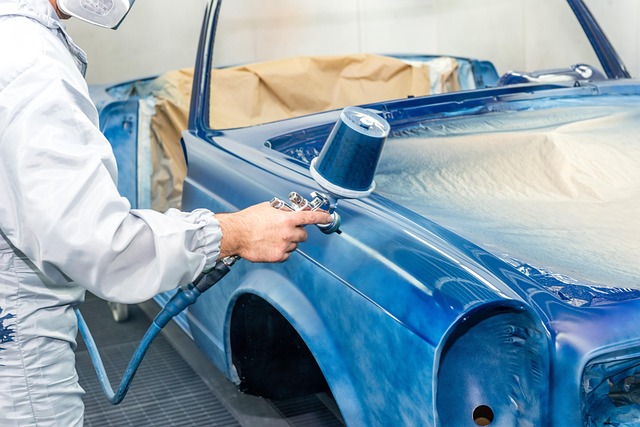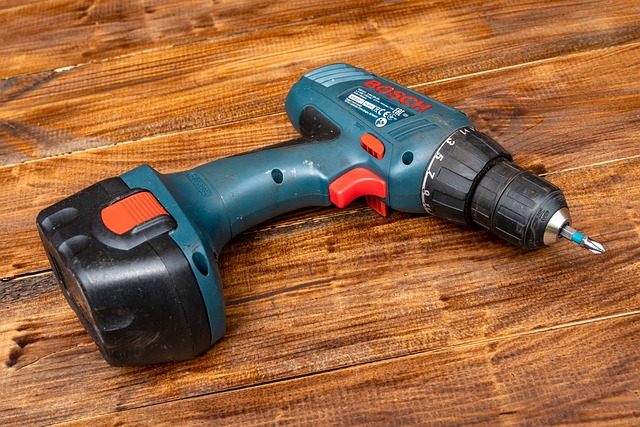Delaying Structural Damage Repair: Risks and Costly Consequences
Delaying structural damage repairs can have severe, compounding consequences for buildings and vehic…….
Structural damage repair is a critical process that involves the restoration and reinforcement of structural elements in buildings, bridges, and other infrastructure after they have been compromised by various forms of damage. This meticulous art combines engineering expertise, advanced materials, and innovative techniques to ensure the safety, stability, and longevity of our built environment. In this article, we will embark on a thorough exploration of structural damage repair, delving into its historical roots, global impact, economic implications, technological innovations, regulatory frameworks, challenges, and the bright future that lies ahead.
Structural damage repair refers to the systematic process of identifying, assessing, and rectifying defects or injuries in structural components of a structure. These components include columns, beams, walls, foundations, and roof trusses. The primary objective is to restore the structural integrity, ensuring that the damaged element can bear its intended load without compromising the overall safety of the building. This involves a multi-step approach:
The concept of repairing structural damage has evolved over centuries, shaped by technological advancements and changing construction practices. Historically, traditional methods involved primarily replacement or reconstruction, relying on skilled artisans to craft new elements to match the originals. For example, in ancient Roman architecture, damaged concrete structures were often rebuilt with stone, demonstrating an early understanding of structural repair.
The Industrial Revolution brought significant changes, introducing steel and reinforced concrete, which revolutionized building construction. As these materials became more prevalent, so did the need for specialized techniques to repair them. The 20th century saw the development of advanced NDT methods and computer-aided design (CAD) software, enabling engineers to analyze and predict structural failures more accurately.
Structural damage repair is a universal necessity, with every region facing unique challenges and adopting tailored solutions. Here’s an overview:
| Region | Challenges | Trending Solutions |
|---|---|---|
| North America | Severe weather events leading to widespread structural damage, particularly in coastal areas prone to hurricanes and storms. | Increased adoption of resilient building codes and advanced NDT methods for faster, more accurate inspections. |
| Europe | Aging infrastructure, with many historic buildings requiring delicate repair to preserve cultural heritage. | Development of retrofitting techniques and smart materials that adapt to changing environmental conditions. |
| Asia Pacific | Rapid urbanization and dense populations exerting immense pressure on existing structures, coupled with frequent seismic activity. | Innovative construction methods combining traditional techniques with modern materials for enhanced structural resilience. |
| Middle East & Africa | Extreme temperatures and harsh climates posing challenges in maintaining infrastructure integrity. | Implementation of climate-responsive design principles and the use of locally sourced, sustainable materials. |
These regional variations highlight the dynamic nature of structural damage repair, where local conditions and cultural considerations play a significant role in shaping best practices.
The global structural damage repair market is substantial and growing, driven by factors such as increasing infrastructure aging, rising construction activity, and heightened awareness of structural safety. According to a 2021 report by MarketsandMarkets, the market size was valued at USD 377.5 billion in 2020 and projected to grow at a CAGR of 4.9% from 2021 to 2026. This growth is attributed to the rising need for retrofitting and rehabilitation projects, particularly in developing countries with rapidly expanding urban centers.
Government initiatives play a pivotal role in driving investment in structural damage repair, primarily through infrastructure development programs and disaster recovery funds. Private sector involvement is also significant, with companies investing in advanced technologies and training to stay competitive and meet rising demand. For instance, the rehabilitation of historic landmarks and cultural sites attracts substantial funding from both public and private sources, ensuring the preservation of architectural heritage.
Technological innovations have significantly contributed to enhancing the efficiency, effectiveness, and safety of structural damage repair. Some notable advancements include:
Regulatory frameworks play a critical role in guiding and influencing the practice of structural damage repair:
Despite its importance, structural damage repair faces several challenges:
Actionable Solutions: To address these challenges:
After almost a century of service, the Brooklyn Bridge required extensive structural repairs to address corrosion and metal fatigue. Engineers employed advanced NDT techniques to assess the damage accurately. The project involved replacing sections of the suspension cables and deck while ensuring minimal disruption to traffic flow. This meticulous repair work not only restored the bridge’s structural integrity but also preserved its iconic status as a symbol of New York City.
In the aftermath of the 2011 Tohoku earthquake and tsunami, Japan embarked on an ambitious reconstruction project. Engineers utilized advanced technologies like drone inspections and digital twinning to repair and reinforce coastal infrastructure. The implementation of resilient building practices and the retrofitting of existing structures have significantly improved Japan’s preparedness against future disasters.
The city of Paris has been meticulously restoring its iconic architectural landmarks, such as the Notre-Dame Cathedral, after fire damage. This project involved intricate repairs to the stonework, lead roofing, and wooden structures, requiring meticulous skill and knowledge. The restoration process not only addressed structural issues but also preserved the cathedral’s cultural and historical significance.
The field of structural damage repair is poised for significant growth and innovation:
Structural damage repair is an indispensable aspect of modern infrastructure management, ensuring the safety and longevity of our buildings and landmarks. This article has provided a comprehensive overview of its historical roots, global impact, economic implications, technological advancements, regulatory frameworks, challenges, and promising future prospects. By addressing structural damage promptly and effectively, we can preserve our built environment, protect lives, and safeguard cultural heritage for future generations.
Q: How do I know if my home needs structural repair?
A: Signs of structural damage include cracks in walls or foundations, uneven floors, sticking doors or windows, and ceiling drippages. If you notice any of these issues, consult a professional engineer for an inspection.
Q: What is the typical cost range for structural repair?
A: Costs vary widely depending on the extent of damage, location, and materials used. Minor repairs might range from $5,000 to $20,000, while major restorations can cost hundreds of thousands or more.
Q: Can historical buildings be repaired without compromising their original integrity?
A: Absolutely. Historical preservation experts use specialized techniques and materials to repair and restore historic structures while maintaining their cultural significance and architectural beauty.
Q: How do I choose a reputable structural repair company?
A: Look for companies with licensed professionals, positive customer reviews, and experience in similar projects. Ensure they provide detailed estimates and warranties for their work.
Q: Are there tax benefits for repairing structural damage?
A: In some countries, certain types of structural repairs may be eligible for tax deductions or credits, especially if they enhance energy efficiency or disaster preparedness. Check with your local tax authority for specific details.

Delaying structural damage repairs can have severe, compounding consequences for buildings and vehic…….

Structural damage repair requires certified technicians to ensure safe and effective resolution, adh…….

Structural damage repair, especially severe frame or unibody compromises, often requires full frame…….

Understanding your insurance policy for structural damage repair is crucial. Coverage varies widely…….

Structural damage repair is a complex field addressing various causes like natural disasters, aging…….

Structural damage repair is a vital service for vehicles and buildings affected by accidents or disa…….

Structural damage repair is a critical aspect of automotive maintenance, focusing on frame and chass…….

Structural damage repair in unibody and frame vehicles requires specialized skills and tools due to…….

Understanding insurance coverage for structural damage repairs is crucial for homeowners and busines…….